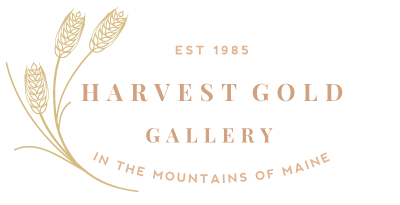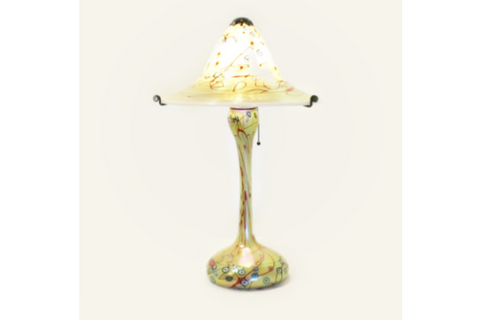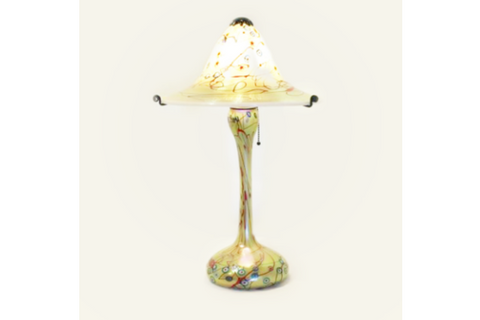Carl Radke was one of the vanguard of young artists who participated in the Renaissance of American Art Glass in the early 1970s. Originated by Tiffany in 1881, and popular during the early part of the nineteenth century, Lustre Art Glass had fallen out of favor about 1925, and has practically become a lost art. The art programs of several California universities began to rekindle an interest in Silver Lustre Art Glass specifically in the later part of the 60s. Several of the young artists became fascinated by the medium and got caught up in the challenge of re-discovering the complex and sophisticated art form of glass making.
Lustre Glass is a very specialized glassblowing medium. Because of the silver content in the glass, it has always been one of the most costly forms of glass ever produced. In addition to the high cost of raw materials used in Lustre Glass, other factors prevent this volatile type of glass from being mass-produced in a large factory environment.
The raw glass can only be maintained in the furnace for a short period of time before the color, quality, and texture of the glass batch begins to degenerate. Not only the specific formulas and high raw materials cost, but the experience and technique needed to work this volatile form of glass has kept the Silver Lustre Art Glass in the hands of a few skillful artisans. To successfully work this medium the glassblower must be a chemist as well as a craftsman with an eye for detail.
Carl Radke is one of only a few glassblowers out of the thousands in the United States who continues to work in this difficult traditional glass. His skill with glass and glass decoration has allowed him to "play" with the medium and develop his own unique style. Radke's glass has been displayed in numerous galleries and exhibitions, and is considered to be highly collectible.



